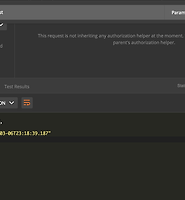코딩하는 오징어
@Bean 과 @Component의 차이 본문
반응형
@Bean
public class RedisConfig {
private @Value("${spring.redis.host}") String redisHost;
private @Value("${spring.redis.port}") int redisPort;
private @Value("${spring.redis.password}") String password;
@Bean
public JedisPoolConfig jedisPoolConfig() {
JedisPoolConfig jedisPoolConfig = new JedisPoolConfig();
jedisPoolConfig.setMaxTotal(30);
jedisPoolConfig.setTestOnBorrow(true);
jedisPoolConfig.setTestOnReturn(true);
return jedisPoolConfig;
}
@Bean
public JedisConnectionFactory redisConnectionFactory() {
JedisConnectionFactory jedisConnectionFactory = new JedisConnectionFactory(jedisPoolConfig());
jedisConnectionFactory.setHostName(redisHost);
jedisConnectionFactory.setPort(redisPort);
jedisConnectionFactory.setPassword(password);
jedisConnectionFactory.setUsePool(true);
return jedisConnectionFactory;
}
@Bean
public RedisTemplate<String , Object> redisTemplate() {
RedisTemplate<String, Object> template = new RedisTemplate<>();
template.setConnectionFactory(redisConnectionFactory());
template.setKeySerializer(new StringRedisSerializer());
template.setValueSerializer(new StringRedisSerializer());
template.setStringSerializer(new StringRedisSerializer());
template.setEnableDefaultSerializer(false);
template.setEnableTransactionSupport(true);
return template;
}
}
@Bean의 경우 개발자가 컨트롤이 불가능한 외부 라이브러리들을 Bean으로 등록하고 싶은 경우에 사용된다.
(예를 들면 Redis와 연동하기위해 RedisConfig 클래스에 @Component를 선언할수는 없으니 RedisTemplate의 인스턴스를 생성하는 redisTemplate메소드를 만들고 해당 메소드에 @Bean을 선언하여 Bean으로 등록한다.)
반대로 개발자가 직접 컨트롤이 가능한 Class들의 경우엔 @Component를 사용한다.
@Component
@Aspect
public class CheckSessionValid {
@Autowired
private SessionTokenRedisRepository sessionTokenRedisRepository;
@Pointcut("execution(public * com.finder.genie_ai.controller.ShopController(..)) && args(token)")
public void controllerClassMethods(String token) {}
//Todo search @AspectJ
@Before("controllerClassMethods(token)")
public void checkSessionValid(String token) {
if (!sessionTokenRedisRepository.isSessionValid(token)) {
throw new UnauthorizedException();
}
}
}
그럼 개발자가 생성한 클래스에 @Bean은 선언이 가능할까?
정답은 No 이다.
@Bean과 @Component는 각자 선언할 수 있는 타입이 정해져있어 해당 용도외에는 컴파일 에러를 발생시킨다.
@Target(ElementType.TYPE)
@Retention(RetentionPolicy.RUNTIME)
@Documented
public @interface Component {
/**
* The value may indicate a suggestion for a logical component name,
* to be turned into a Spring bean in case of an autodetected component.
* @return the suggested component name, if any (or empty String otherwise)
*/
String value() default "";
}
(@Target이 TYPE로 지정되어 Class위에서만 선언될수 있음을 알수 있다.)
@Target({ElementType.METHOD, ElementType.ANNOTATION_TYPE})
@Retention(RetentionPolicy.RUNTIME)
@Documented
public @interface Bean {
/**
* Alias for {@link #name}.
* <p>Intended to be used when no other attributes are needed, for example:
* {@code @Bean("customBeanName")}.
* @since 4.3.3
* @see #name
*/
@AliasFor("name")
String[] value() default {};
/**
(@Target이 METHOD로 지정되어 있지만, TYPE은 없다)
참고 블로그 : http://jojoldu.tistory.com/27
반응형
'Framework > Spring' 카테고리의 다른 글
| intellij에서 Spring 4 초기 환경 세팅에서 디비연동까지 한 번에 하기 (Maven & Mysql & Mybatis) (7) | 2018.03.09 |
|---|---|
| Spring 4 하나 이상의 Dispatcher Servlet 설정하기 (0) | 2018.03.07 |
| Spring 4 mvc에서 Restful API (0) | 2018.03.06 |
| Spring boot @Annotation으로 AOP적용하기 (0) | 2018.03.04 |
| Spring에서 Redis ZSET구조 이용하기 (0) | 2018.02.26 |
Comments



